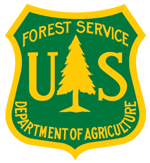Projects RSS
by
Web Editor
—
last modified
Jul 03, 2013 03:21 PM
- Cultural Landscapes — by Web Editor — last modified Apr 26, 2018 09:05 PM
- Landscapes, the visible features of an area like mountains or rivers or skylines, house an abundant of riches and dynamic relationships. They can range from thousands of acres of farm land to an historic seaport, from a Civil War battlefield to the pristine wilderness of some of our most cherished national parks. There are natural landscapes and human-dominated landscapes and cultural landscapes.
- Presentation by Maddie Brown - Research Results - Partnership — by Jean Brennan — last modified Apr 26, 2018 08:45 PM
- pdf copy of PPT slides used by Dr. Brown in "reporting out" to the Partnership on the research project of the AppLCC Partner organizational representatives. See report for full methodology etc. and the "Partner Dashboard" that graphically captures the research results.
- Partner Interviews — by Web Editor — last modified Apr 26, 2018 08:42 PM
- December 5th, 2017 Appalachian LCC Conservation Fellow
- Information on the AppLCC Fellowships — by Web Editor — last modified Apr 26, 2018 08:37 PM
- The Fellowship offers a unique opportunity for new-entry professionals to be part of the emerging and exciting field of Landscape Conservation. This is a post-graduate level training opportunity with career interests in applied landscape conservation science and resource management.
- Integrating Cultural Resource Preservation at a Landscape Level — by Rosanne Hessmiller — last modified Mar 21, 2018 10:34 AM
- A collaborative research project sponsored by the National Park Service and the Appalachian LCC seeks to integrate cultural resources, such as historic bridges and Civil War Battlefields, into landscape conservation planning and design to emphasize both natural and cultural resources in defining conservation priorities.
- Fact Sheet: Stream Impacts — by Matthew Cimitile — last modified Mar 16, 2018 01:35 PM
- Assessing current and future water withdrawal scenarios to inform decisions for achieving sustainable water ows that meet human demands and sustain healthy ecosystems.
- Fact Sheet: Cave and Karst Resources — by Matthew Cimitile — last modified Mar 16, 2018 12:53 PM
- Addressing knowledge gaps to better protect unique landforms and their wealth of hidden biodiversity.
- Predicting the Occurrence of Cave-Inhabiting Fauna Based on Features of the Earth Surface Environment — by Rosanne Hessmiller — last modified Feb 01, 2018 04:45 PM
- Final Report
- Identifying the Valued Ordinary, as a Step toward Scenic Landscape Conservation. Visual Resource Stewardship Conference Landscape and Seascape Management in a Time of Change. — by Rosanne Hessmiller — last modified Jan 27, 2018 10:44 PM
- The Georgia Scenic Byways program (GDOT, 2017) is a “grassroots effort … to identify, preserve, promote and protect treasured corridors throughout the state.” There are fifteen such corridors designated by Georgia DOT, their only protection is a restriction on roadside billboards. Despite frequent avocation of the beauties of Georgia highways, there is no systematic articulation of the physical attributes of a scenic landscape, how such attributes would be identified and thus protected, nor the expertise or resources to devote to new discoveries.
- Integrating Visual and Cultural Resource Evaluation and Impact Assessment for Landscape Conservation Design and Planning — by Web Editor — last modified Jan 27, 2018 10:44 PM
- While there is an increased need for cultural resource conservation and management in North America, there are few approaches that provide robust integration and combined assessment of visual and cultural resources. Determining the scenic value of important views and identifying potential risk for loss of that view are core components needed to design protection preserving scenic quality and the cultural resources contributing to scenic value and overall sense of place.
- The use of crowdsourced and georeferenced photography to aid in visual resource planning and conservation — by Web Editor — last modified Jan 27, 2018 10:44 PM
- The advent of Web 2.0 and the growth of social media platforms have fostered an environment for the documentation and sharing of landscape imagery. In addition to looking at the site scale, using these big data allows for visual landscape assessment at the regional scale. The onset of Marcellus shale gas development in the state of Pennsylvania concurrent with the rapidly widening availability of crowd-sourced citizen photography has provided a valuable opportunity to study crowdsourced and georeferenced photography as an aid in visual resource conservation design and planning. As Trombulak and Baldwin (2010) outline, the goals for this work include identifying spatially explicit measures of change in the landscape, being able to predict spatially explicit threats to the landscape, recognizing sites within the region that are important or irreplaceable, and prioritizing areas for conservation action to address pressures and preserve/conserve exceptional sites in the future.
- CCVA Fact Sheets: Forested Stream and / or Seepage — by Web Editor — last modified Jan 26, 2018 11:20 AM
- Forested Stream and/or Seepage Forested stream environments are typically found in the buffer zones between forested land and stream banks, often known as riparian zones. Stream headwaters and seepage areas occur where ground water percolates to the surface through muck, mossy rock, and nettles. It can also be found under rocks, among gravel, or cobble where water has begun to percolate in areas near open water. Breeding grounds are commonly found beneath mosses growing on rocks, on logs, or soil surfaces in these types of seepage areas. Predicted climate change will largely impact changes in temperature and moisture availability in forested stream and/or seepage systems, likely having a cascading effect on a species habitat and increasing stress to many of these species. The Appalachian LCC funded NatureServe to conduct vulnerability assessments on a suite of plants, animals, and habitats within the Appalachians. These assessments can be used as an early warning system to alert resource managers about changing conditions.
- CCVA Fact Sheet: Open Woodlands — by Rosanne Hessmiller — last modified Jan 26, 2018 11:20 AM
- Open Woodlands Used generally to describe low density forests, open woodland ecosystems contain widely spaced trees whose crowns do not touch, causing for an open canopy, insignificant midstory canopy layer, sparse understory and where groundcover is the most obvious feature of the landscape dominated by diverse flora (grasses, forbes, sedges). Open Woodlands provide habitat for a diverse mix of wildlife species, several of which are of conservation concern, such as Red Headed Woodpecker, Prairie Warbler, Kentucky Warbler, Northern Bobwhite and Eastern Red Bat. Predicted climate change will largely impact changes in temperature and moisture availability in open woodlands systems, likely having a cascading effect on a species habitat and increasing stress to many of these species. The Appalachian LCC funded NatureServe to conduct vulnerability assessments on a suite of plants, animals, and habitats within the Appalachians. These assessments can be used as an early warning system to alert resource managers about changing conditions.
- CCVA Fact Sheet: Forest and Woodlands — by Rosanne Hessmiller — last modified Jan 26, 2018 11:20 AM
- Forest/Woodland habitats describe large areas primarily dominated by trees, with moderate ground coverage, such as grasses and shrubs. Density, tree height, and land use may all vary, though woodland is typically used to describe lower density forests. A forest may have an open canopy, but a woodland must have an open canopy with enough sunlight to reach the ground and limited shade. Predicted climate change will largely impact changes in temperature and moisture availability in forest/ woodlands systems, likely having a cascading effect on a species habitat and increasing stress to many of these species. The Appalachian LCC funded NatureServe to conduct vulnerability assessments on a suite of plants, animals, and habitats within the Appalachians. These assessments can be used as an early warning system to alert resource managers about changing conditions.
- CCVA Fact Sheet: Meadows and Marshlands — by Rosanne Hessmiller — last modified Jan 26, 2018 11:20 AM
- Meadows are open grasslands where grass and other non-woody plants are the primary vegetation. With no tree coverage, meadows are typically open, sunny areas that attract flora and fauna that require both ample space and sunlight. These conditions allow for the growth of many wildflowers and are typically important ecosystems for pollinating insects. Marshlands are like meadows in that they typically have no tree coverage and host primarily grasses and woody plants. However, a defining characteristic of marshlands is their wetland features. Predicted climate change will largely impact changes in temperature and moisture availability in meadows and marshlands systems, likely having a cascading effect on a species habitat and increasing stress to many of these species. The Appalachian LCC funded NatureServe to conduct vulnerability assessments on a suite of plants, animals, and habitats within the Appalachians. These assessments can be used as an early warning system to alert resource managers about changing conditions.
- CCVA Fact Sheet Meadows — by Rosanne Hessmiller — last modified Jan 26, 2018 11:20 AM
- CCVA Meadow
- Fact Sheet: Assessing Vulnerability of Species and Habitats — by Web Editor — last modified Jan 26, 2018 11:07 AM
- New vulnerability assessments for 41 species and 3 habitats in the Appalachians now available.
- Environmental flows in the context of unconventional natural gas development in the Marcellus Shale — by Jean Brennan — last modified Dec 12, 2017 01:37 PM
- This study clarifies how additional water demands in the region may adversely affect freshwater biological integrity. The results make clear that policies to limit or prevent water withdrawals from smaller streams can reduce the risk of ecosystem impairment. 2016 Scientific Reports associated with the AppLCC-funded research to Cornell.
- Cave and Karst Data Access — by Rosanne Hessmiller — last modified Jul 05, 2017 02:15 PM
- The cave and karst dataset from this research is available through our Conservation Planning Atlas.
- Fact Sheet: Stream Classification — by Matthew Cimitile — last modified May 25, 2017 12:39 PM
- Developing consistent region-wide information to ensure enough water for people and wildlife.


























